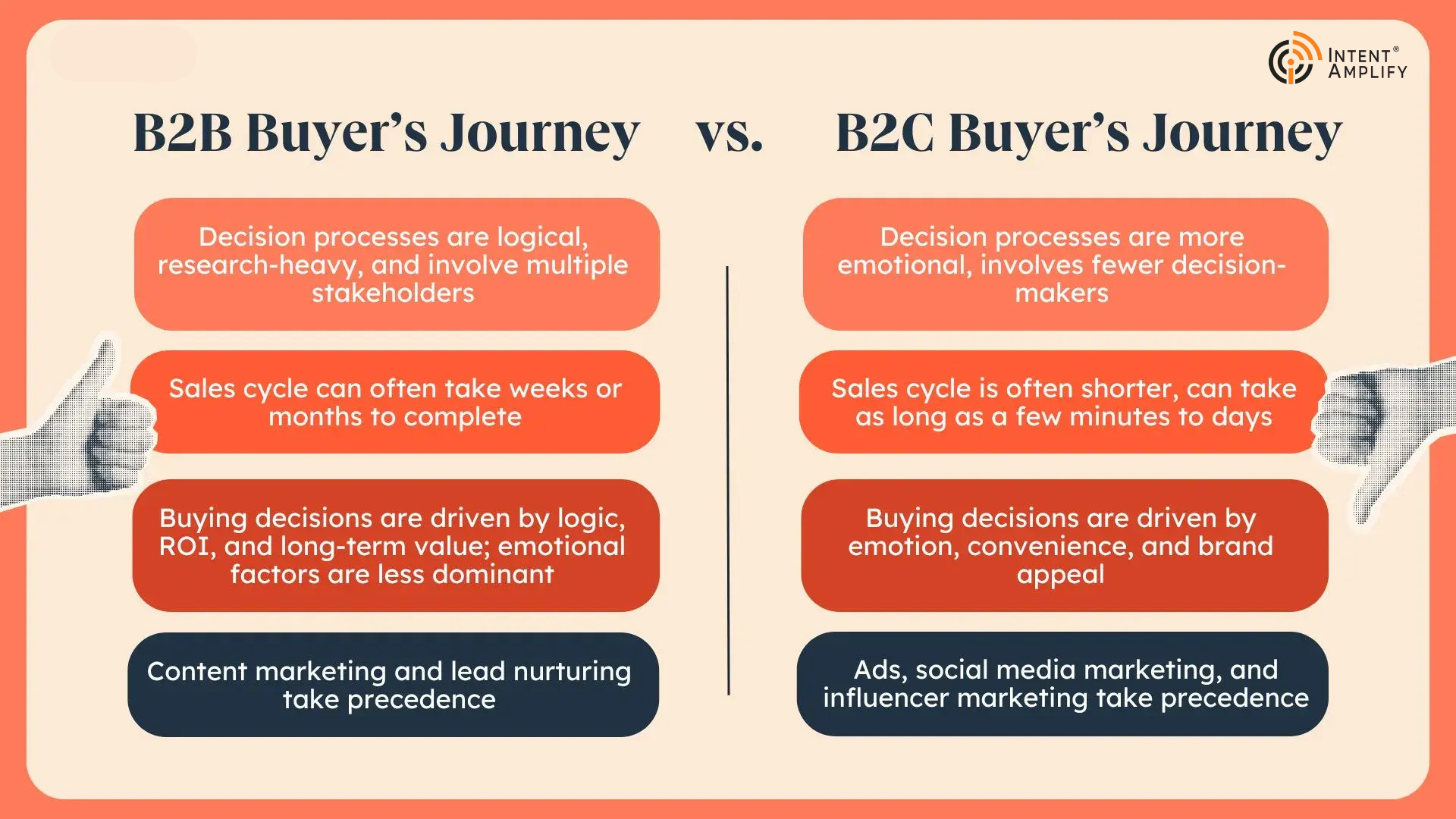What Makes the B2B Buyer Journey Different from B2C — and How to Map It Effectively

The buyer journey is a critical framework for understanding how customers evaluate, select, and commit to a product or service. While B2C purchasing decisions are often emotional, quick, and driven by personal preferences, the B2B buyer journey is more strategic, collaborative, and prolonged. For organizations aiming to build stronger connections, optimize their marketing funnels, and deliver high-value services, understanding the distinctions between B2B and B2C journeys is essential.
Key Differences Between B2B and B2C Buyer Journeys
1. Longer and More Complex Decision Cycles
The B2B buyer journey typically involves multiple stakeholders, including decision-makers, influencers, and technical evaluators. Unlike B2C, where purchases may be completed in minutes or hours, B2B cycles can span weeks or months. Buyers evaluate the long-term ROI, compatibility with existing tools, integration needs, and post-purchase support. This complexity requires businesses to provide detailed resources such as whitepapers, ROI calculators, and a comprehensive mediakit to support evaluation.
2. Rational, Value-Driven Decisions
While B2C decisions often rely on emotional triggers, B2B decisions are grounded in logic, business outcomes, and financial justification. Buyers focus on efficiency, growth, security, and measurable benefits. This means messaging must highlight use cases, quantifiable results, and organizational alignment rather than personal convenience.
3. Higher Investment, Higher Expectations
B2B purchases often involve large contracts or long-term commitments. As a result, buyers expect more transparency, personalized engagement, and continuous support. They also expect to review case-study materials, success metrics, and proof of performance before moving forward.
4. Multi-Touch and Multi-Channel Interactions
The B2B journey spans emails, webinars, events, product demos, comparison guides, and reputation research. Companies must ensure consistent experiences across our-brands, solutions pages, and sales interactions. This requires a thoughtful omnichannel strategy and a clear roadmap of touchpoints.
How to Map the B2B Buyer Journey
Creating a clear and actionable map helps align marketing, sales, and customer success teams. Below are the key steps to mapping an effective B2B buyer journey.
1. Define Your Buyer Personas
Start by identifying the decision-makers involved — executives, IT managers, procurement officers, or end users. Each persona has unique motivations and pain points. Tailor your messaging and services to address their specific concerns.
2. Identify the Stages of the Journey
A typical B2B buyer journey includes:
- Awareness: The buyer identifies a problem and seeks information. Provide educational content, thought leadership, and introductory resources like blogs, infographics, and mediakit links.
- Consideration: Buyers dig deeper into solutions. Here, detailed product pages, webinars, and comparison guides help build trust.
- Decision: Buyers evaluate vendors. Case-study documents, demo sessions, testimonials, and pricing discussions play a crucial role.
- Purchase: Contract negotiation and onboarding occur. Smooth handoff to customer success is key.
- Post-Purchase: Satisfaction, renewal, and upsell opportunities arise. Continued value delivery strengthens loyalty and advocacy.
3. Determine Touchpoints and Content Needs
For each stage, list the touchpoints that your buyers engage with. These may include:
- Website pages such as our-brands and product portfolios
- Sales presentations
- Email nurture campaigns
- Industry events
- Personalized demos
- ROI calculators
- Case studies and whitepapers
Mapping these touchpoints ensures consistent messaging and supports buyers at every step.
4. Align Internal Teams
Sales, marketing, and customer success must work cohesively. Define responsibilities, metrics, and communication flows so every team understands how to guide prospects through the funnel.
5. Continuously Refine the Journey
Use analytics, customer feedback, and win/loss reviews to identify gaps and improve the journey. Adjust content, messaging, and engagement tactics based on real-world insights.
Read More: https://intentamplify.com/blog/b2b-buyer-journey/
- Art
- Causes
- Crafts
- Dance
- Drinks
- Film
- Fitness
- Food
- Jogos
- Gardening
- Health
- Início
- Literature
- Music
- Networking
- Outro
- Party
- Religion
- Shopping
- Sports
- Theater
- Wellness


